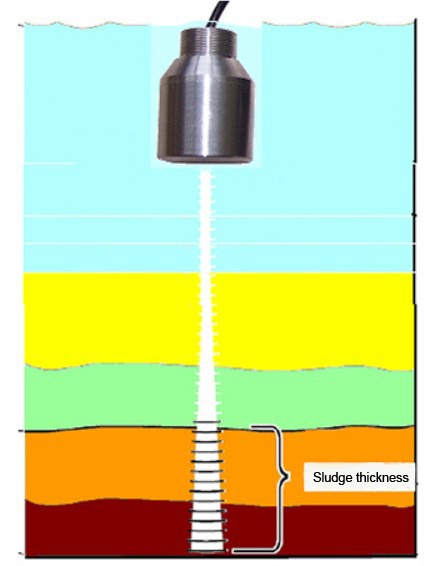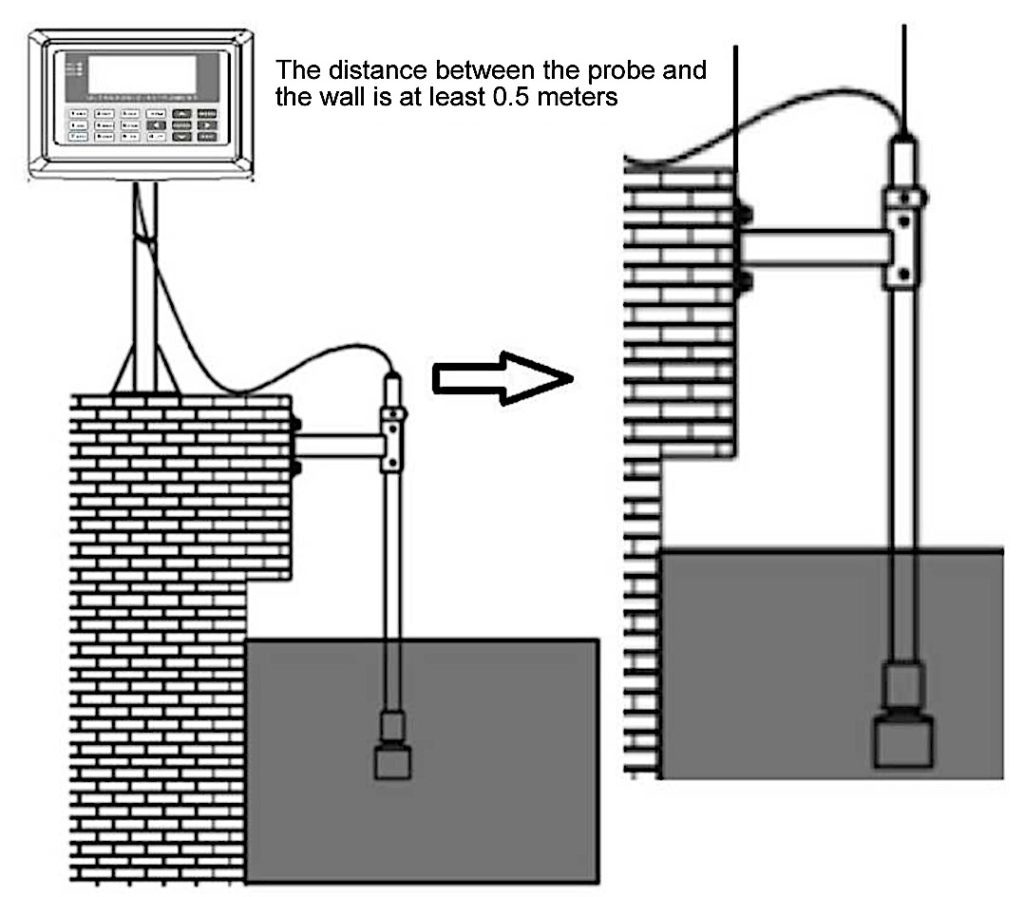Ultrasonic Slurry Interface Instrument is an intelligent non-contact liquid (solid) level measuring instrument. Ultrasonic mud-water interface instrument is composed of ultrasonic probe and control host.
What is a ultrasonic sludge interface gauge meter?
Sludge interface meters generally use ultrasonic technology, so they are also called ultrasonic mud level meters. Use the echo signal from the ultrasonic pulse to measure the value of the sludge interface, and use the time when the ultrasonic wave returns to the probe to detect the distance between the sensor probe and the sludge interface and the distance from the bottom surface, and then calculate the thickness of the sludge layer.The ultrasonic sludge interface instrument meter utilizes the reliable ultrasonic echo detection principle to realize the real-time detection of sludge thickness and provide reliable data for the process control of related processes, thereby optimizing the process control processes such as sludge discharge and dosing.
SLUDGE INTERFACE LEVEL GAUGE MEASUREMENT PRINCIPLE
The working principle of the ultrasonic mud-water interface instrument is to use the transducer to emit ultrasonic waves in the water. When the sound wave encounters an obstacle and is reflected back to the transducer, according to the round-trip time of the sound wave and the speed of the sound wave propagation in the measured water area, it can be obtained. The distance D between the obstacle and the transducer. When the height H of the channel is known, the height h from the bottom of the channel to the bottom of the channel can be calculated. The mud-water interface instrument adopts a large-screen Chinese graphic LCD display, which can display the distance D and the sludge height h (after setting H). By measuring the time difference between transmission and reception, the measurement distance is calculated according to the propagation speed of sound waves in the air.

Its measurement formula is as follows:
D=V*T/2
D: measure distance
V: the speed of sound waves propagating in the liquid
T: the time that the sound wave travels in the liquid
The mud-water interface meter can quickly and accurately measure the water depth continuously while the vessel is sailing. Commonly used in channel survey, underwater topography survey, hydrographic survey and ship navigation and positioning.
What the application of ultrasonic sludge mud interface level sensor?
The treatment of many wastewater and sewage requires the separation of solids and liquids by sedimentation. The sedimentation process is usually completed in a sedimentation tank or a special concentration tank. The sludge interface meter is used to monitor the sludge height in the tank and control the sludge discharge cycle of the sedimentation tank or the concentration tank. When the sludge interface meter detects that the sludge reaches the design height, the sludge discharge pump can be controlled to discharge the sludge.
The sludge interface meter is usually used for the measurement of sludge interface in primary sedimentation tank, secondary sedimentation tank and sludge thickening tank suitable for sewage treatment, and the measurement of sludge level in sedimentation tank of waterworks. In addition, it is also widely used in industries that require solid-liquid separation in the production process of papermaking, mining, electricity, petroleum, etc., to monitor the height of solids in the sedimentation process, such as oil/asphalt separation tanks, pulp tanks, power mortar sedimentation tanks, mining clarifiers, etc.
Ultrasonic mud water (sludge) interface instrument gauge installation
Precautions for the use of ultrasonic mud-water interface instrument sensor probes:
1. The sensor probe must be installed vertically with the water surface.
2. There should be no other solid blocking between the sensor probe and the bottom of the pool, otherwise interference signals will be generated.
3. The sensor probe should avoid being hit by floating objects in the water. If the suspended matter in the water is easy to adhere to the surface of the probe, it is recommended to install a self-cleaning system to keep the surface of the probe clean.
4. The immersion depth of the sensor probe is recommended to be about 20cm (this distance can be increased or decreased according to the speed of river water flow), and the distance between the probe and the pool wall is at least 50cm (this distance can be increased according to the measurement depth and the unevenness of the pool wall) ).
5. The sensor probe is measured in the shallow water area, and the underwater riverbed environment has a certain slope, and the sensor probe is as perpendicular to the reflection surface of the underwater riverbed as possible.





